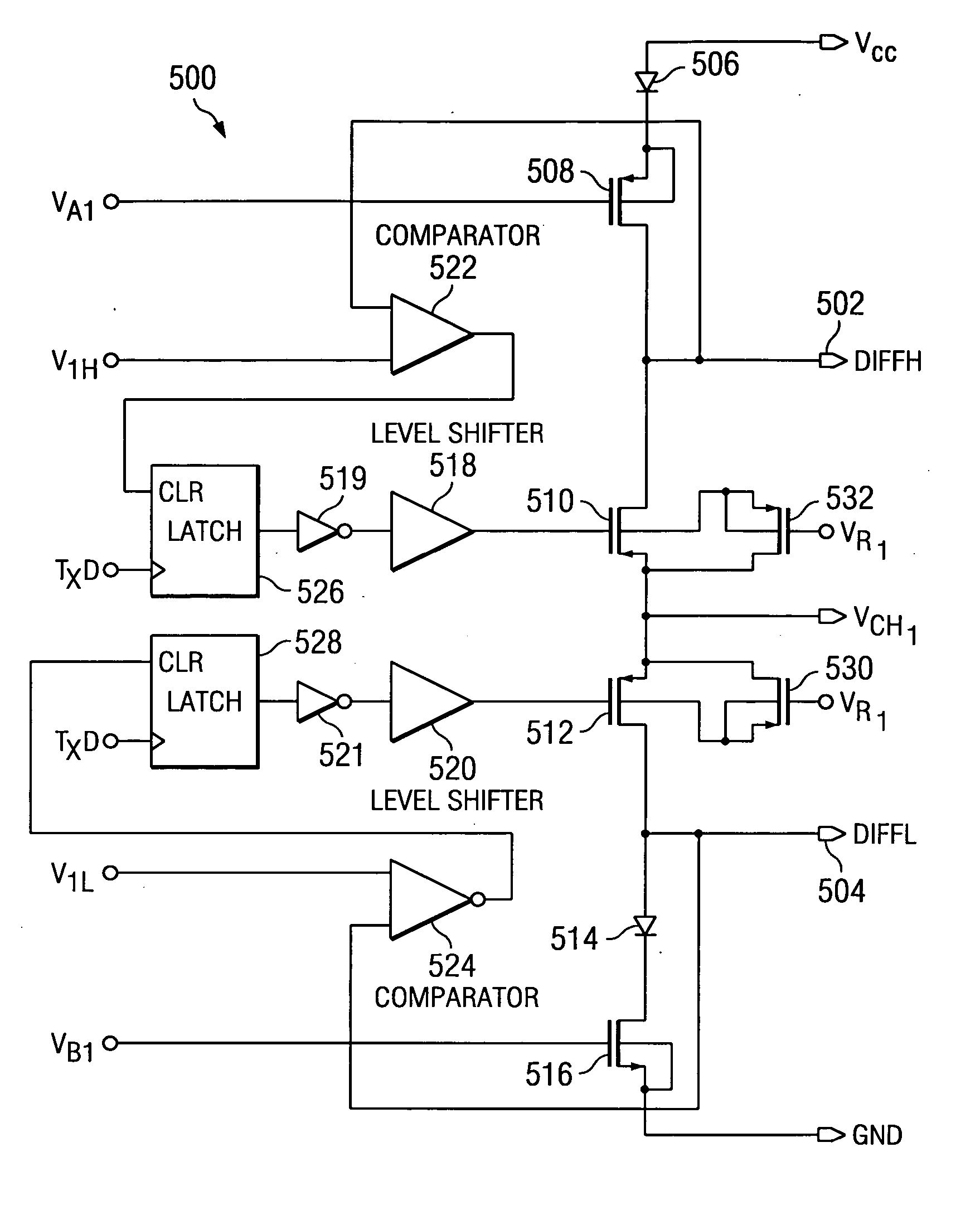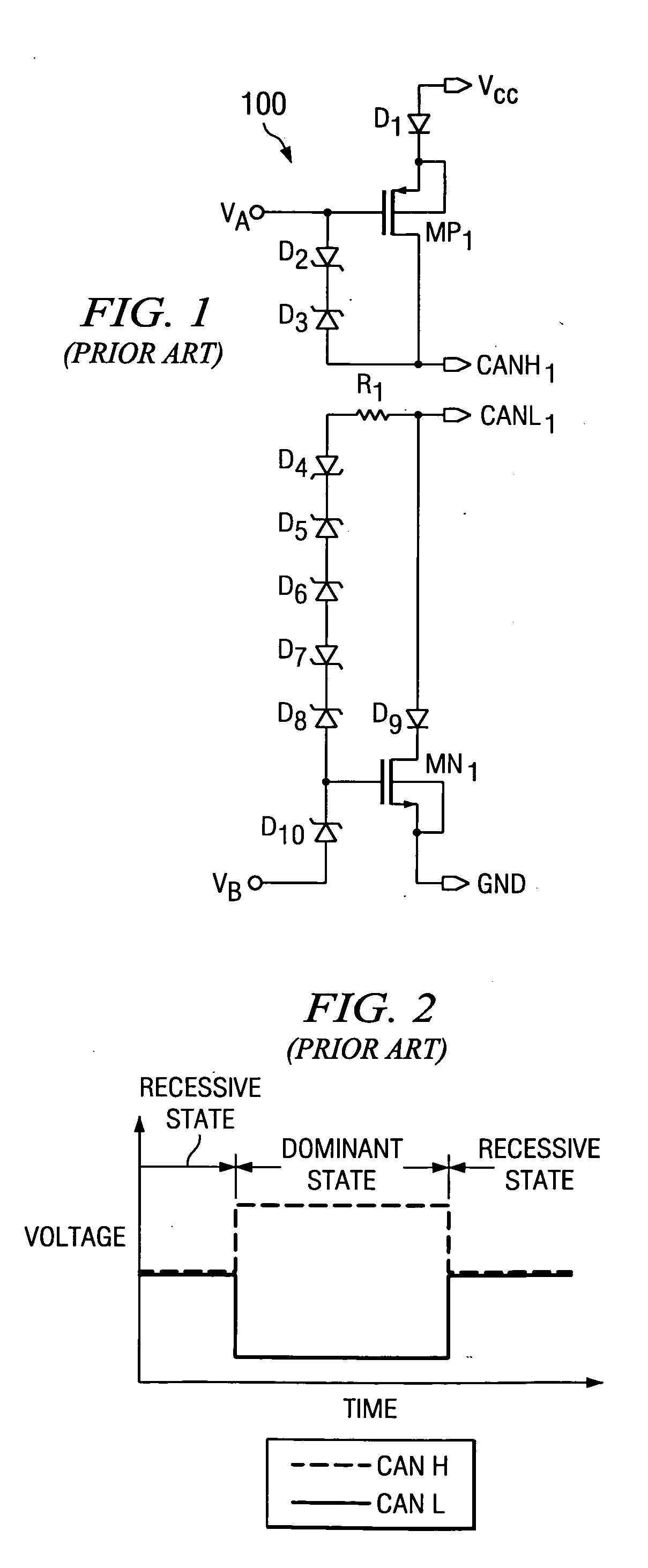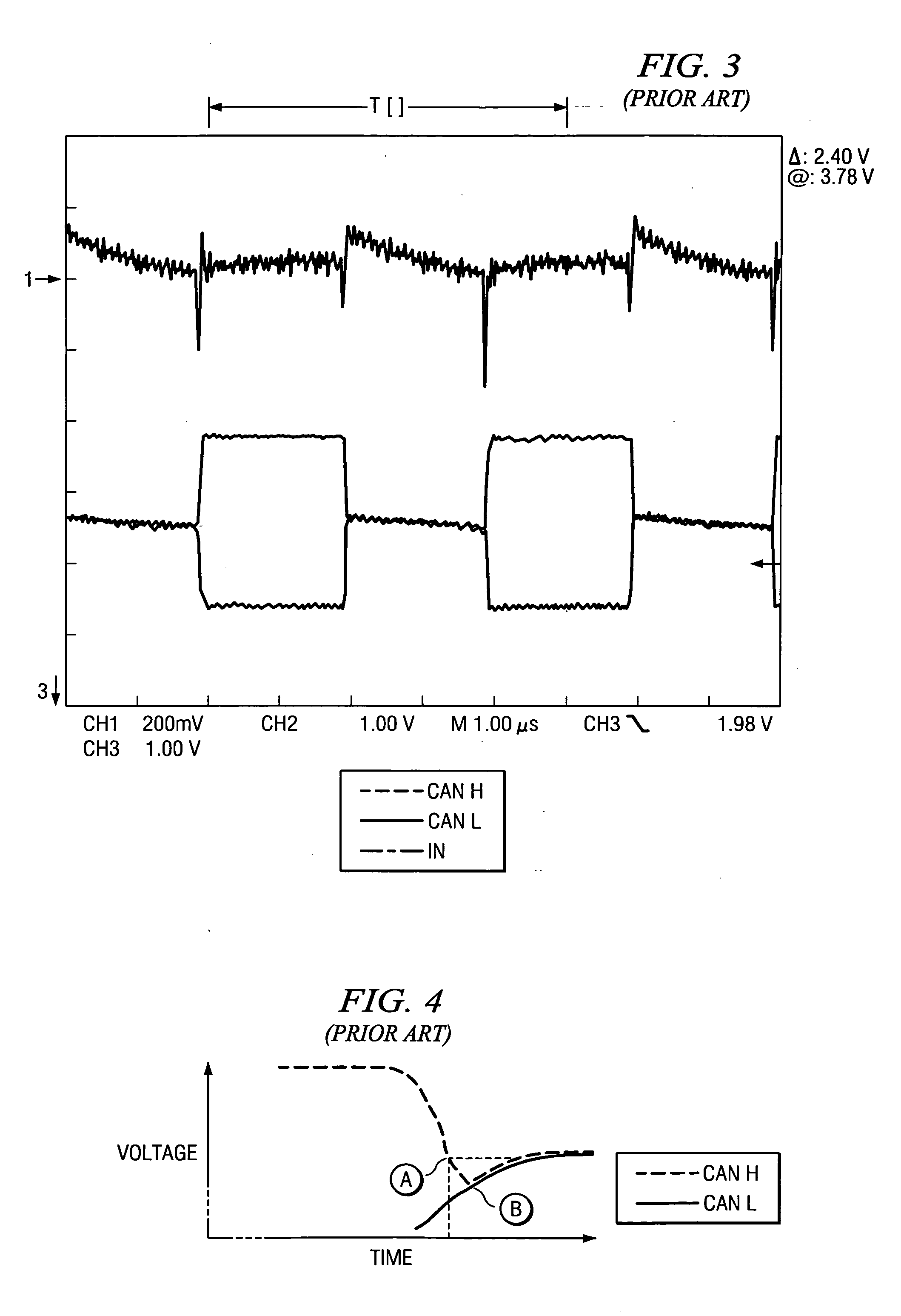Common mode stabilization circuit for differential bus networks
a technology of differential bus network and common mode stabilization circuit, which is applied in the direction of pulse generator, pulse manipulation, pulse technique, etc., can solve the problems of radiated emissions, interference with various types of electronic equipment, cell phones and radios, and radiated emissions, so as to improve symmetry and minimize common modes
- Summary
- Abstract
- Description
- Claims
- Application Information
AI Technical Summary
Benefits of technology
Problems solved by technology
Method used
Image
Examples
Embodiment Construction
[0028] One or more exemplary implementations of the present invention will now be described with reference to the attached drawings, wherein like reference numerals are used to refer to like elements throughout. The various aspects of the invention are illustrated below in a differential bus network, although the invention and the appended claims are not limited to the illustrated examples.
[0029] The present invention is best understood by comparison with the prior art. Hence, this detailed description begins with a discussion of known output driver of a differential bus network shown in FIG. 1.
[0030] A known output driver of a CAN transceiver is shown in FIG. 1. A signal to be transmitted, TxD, (not shown) is applied to wave shaping circuitry (not shown), wherein voltage references, VA and VB, are a derivative of this transmitted signal, TxD. The voltage references, VA and VB, are applied to the gate of transistors, MP1 and MN1, respectively. Diodes, D2 and D3, are coupled in ser...
PUM
 Login to View More
Login to View More Abstract
Description
Claims
Application Information
 Login to View More
Login to View More - R&D
- Intellectual Property
- Life Sciences
- Materials
- Tech Scout
- Unparalleled Data Quality
- Higher Quality Content
- 60% Fewer Hallucinations
Browse by: Latest US Patents, China's latest patents, Technical Efficacy Thesaurus, Application Domain, Technology Topic, Popular Technical Reports.
© 2025 PatSnap. All rights reserved.Legal|Privacy policy|Modern Slavery Act Transparency Statement|Sitemap|About US| Contact US: help@patsnap.com



